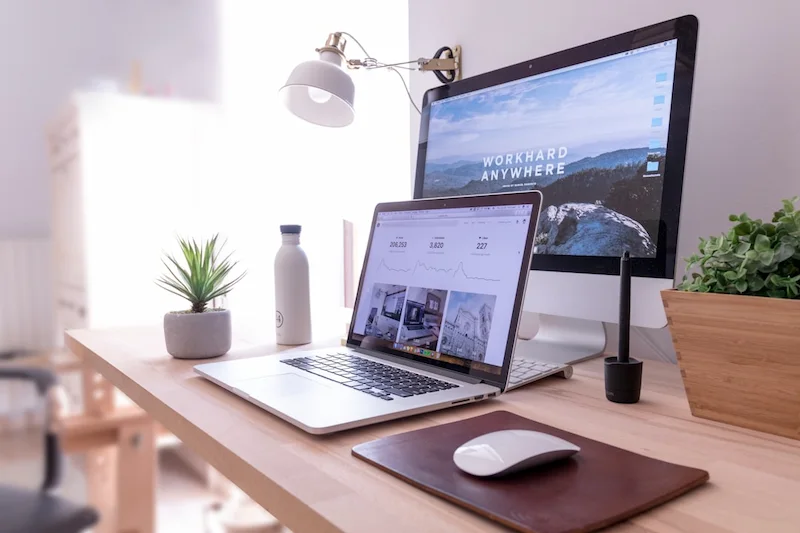Table of Contents
In our modern, screen-centered workplaces, the demands on our eyes are constant. From computer monitors to smartphones, our eyes are exposed to hours of strain that can lead to discomfort, fatigue, and even long-term health consequences if not managed. For many of us, the workday doesn’t end with the last email or meeting; our eyes continue to work hard even after we leave the office. This makes it essential to adopt habits that protect eye health throughout the day, especially in environments where screen time is unavoidable. Whether at home, in the office, or on the go, here’s a guide to keeping your eyes healthy and resilient in the digital age.
Invest in Quality Blue Light Glasses
With the rise of digital screens, exposure to blue light has become a common concern. Prolonged exposure to this type of light can disrupt sleep patterns and lead to digital eye strain, especially if you work late hours. Blue light glasses are designed to filter out harmful blue light, making them a valuable tool for maintaining eye comfort during extended screen time.
Consider blue light glasses if you often experience eye strain or fatigue from screen time. They can noticeably ease eye tension by day’s end, especially for those who spend long hours in front of screens. By choosing to block blue light with these specially designed lenses, you can ease eye tension while also promoting healthy sleep habits by reducing blue light exposure in the evening. Many users report reduced headaches, eye strain, and fatigue after just a few weeks of use.
Optimize Your Screen Setup for Comfort
Screen placement greatly impacts eye strain. Position your monitor just below eye level and about arm’s length away for optimal viewing. This setup promotes a natural posture, reducing awkward tilting and prolonged staring. Adjusting brightness and contrast to a comfortable level also eases strain.
Minimizing glare is essential, as it forces your eyes to work harder. Use an anti-glare screen filter or adjust lighting to avoid reflections. Balanced brightness between your screen and room reduces strain and helps your eyes focus comfortably.
Take Regular Breaks with the 20-20-20 Rule
One of the simplest, most effective ways to protect your eyes is the 20-20-20 rule. This technique involves looking away from your screen every 20 minutes, focusing on something 20 feet away for at least 20 seconds. This short break allows the tiny muscles in your eyes to relax, reducing strain and helping you maintain sharp vision throughout the day.
Integrating this practice into your routine is easier than it sounds. Set an alarm or use a timer on your computer to remind yourself to take these mini breaks. Not only does this habit give your eyes a chance to reset, but it also helps improve overall productivity by reducing feelings of fatigue and boosting your mental clarity.
Adjust Font Sizes and Display Settings
Straining to read small text on a screen can lead to both eye discomfort and fatigue. Increasing the font size on your computer, tablet, or phone can make a big difference in comfort, allowing you to read more naturally without squinting. Similarly, adjusting display settings, such as contrast and color, can make the on-screen text more comfortable for your eyes.
If available, enable high contrast mode, which makes text easier to read, especially for those with vision issues. Many devices also offer dark mode, which can be gentler on the eyes in low light. Adjusting these settings can help reduce eye strain during long work sessions or extensive reading.
Maintain Proper Lighting in Your Workspace

Lighting plays a crucial role in how your eyes interact with your screen. Overhead, task or even natural lighting should be balanced to prevent glare while providing adequate illumination. Avoid sitting directly under a bright overhead light or facing a window without adequate shades, as these can create harsh contrasts that strain your eyes.
Instead, opt for soft, diffused lighting that complements your screen brightness. Desk lamps with adjustable brightness or LED bulbs emitting softer light are ideal for maintaining a comfortable workspace. The right lighting setup reduces eye strain and contributes to a calmer, more productive atmosphere that supports your overall well-being.
Stay Hydrated and Blink Often
Dehydration can lead to dry eyes, exacerbating discomfort during screen use. Drink water throughout the day to maintain eye moisture and keep them comfortable, especially if you work in a dry or air-conditioned space. Drinking water regularly benefits not only your eyes but also your overall energy and focus.
Additionally, remember to blink. It might sound simple, but many people forget to blink often enough when using screens, which leads to dryness and irritation. Blinking frequently replenishes the tear film on the eye’s surface, helping it stay lubricated and free from irritation. Try to be mindful of this, especially during intense focus sessions.
Caring for your eyes at work goes beyond immediate comfort; it’s about long-term health. Small adjustments can keep your vision sharp and reduce eye strain over time. By building these habits, you invest in a healthier, more comfortable work experience.
Want to explore something different? Surviving the Fallout: A Recovery Guide for Accidents with Lasting Consequences

